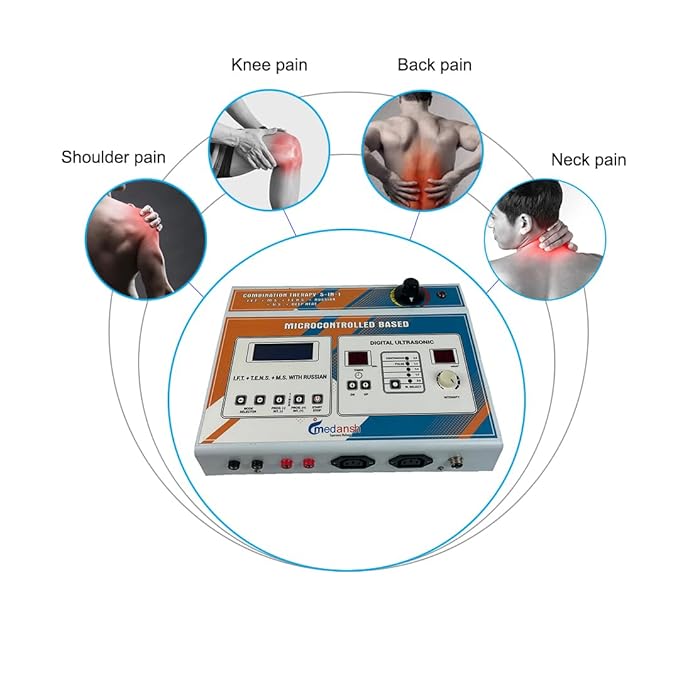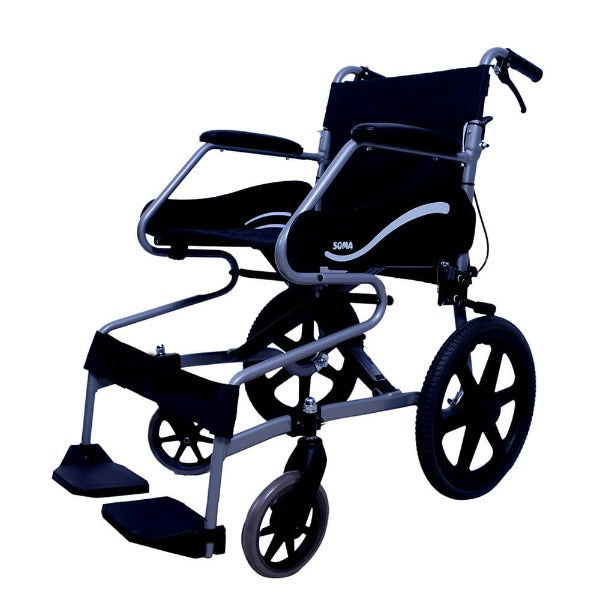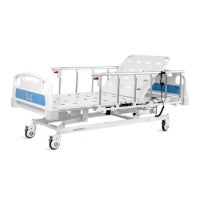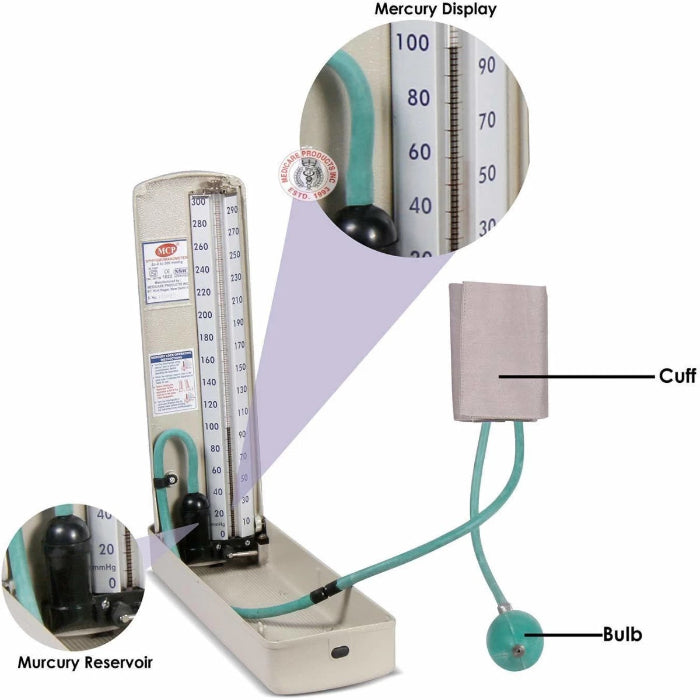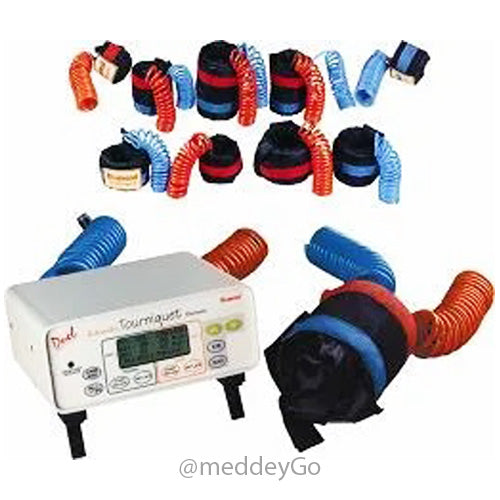Filter
43 products
Type: Devices
Omron HBP-1320 Blood Pressure Monitor White
Type: Devices
Wall Mounted Monitor Stand 3 Para
Type: Devices
Omron Blood Pressure Monitor Smart Elite HEM-7600T
Type: para monitor
3 Para Monitor NIBP, PR SpO2 with Stand with 2 Years Warranty
Type: Devices
Ultrasonic Digital BMI Body Fat Scale
Type: Devices
5 Para Monitor 15 Inch TFT, Adult and Pediatric Accessories
Type: para monitor
3 Para Bed Side Monitor
Type: para monitor
5 Para Monitor Veterinary
Type: Automatic Electronic Tourniquet
Diamond Automatic Electronic Tourniquet Dual Cuff TRDG 503
Type: wall mount
Wall Mounted Monitor Stand 5 Para
Type: 5 para
5 Para Bed Side Monitor Aqua 12 with 2 Years Warranty
Type: para monitor
5 Para Bed Side Monitor with Basket Stand
Type: Devices
Vcomin Fetal Doppler 300D
Type: Devices
Table Top Pulseoximeter for use in Clinics and Hospitals
Type: Devices
Portable ECG Workstation
Collection:
Smart Digital Devices — Category Guide for Clinics, Physiotherapists, and Medical Students
Smart digital devices help teams measure, monitor, and decide fast. Moreover, these tools simplify care for clinics and rehab centers. In education, they also support teaching and skills labs. Consequently, this guide explains how to choose the right smart digital devices for daily use. In addition, it shows where digital health devices fit in your workflow, how smart healthcare devices save time, and when to pick a pulse oximeter or a digital alcohol tester for screening. Overall, everything here is written for quick decisions and clear buying steps.
Product Overview
Smart digital devices are electronic tools that capture clinical data with accuracy and speed. Specifically, they include vital sign monitors, pulse oximeter options, portable ECG machines, nebulizers, fetal dopplers, body composition analyzers, and a digital alcohol tester for screening. Moreover, many models are portable. Additionally, most store results for later review. Furthermore, some connect to phones or computers for reports.
These digital health devices improve clinical flow. Moreover, staff can learn them fast. As a result, readings stay clear and consistent. Additionally, storage and export remain simple for audits. For students, the displays aid learning and repetition. Meanwhile, in physiotherapy, real-time numbers guide safe exercise. Therefore, in clinics, quick measurements reduce waiting time and repeat visits. Altogether, this value holds across digital health devices and smart healthcare devices.
Typical outcomes
- Consequently, faster triage and follow-up
- Therefore, fewer repeat measurements
- Additionally, clear data for handovers and audits
- Ultimately, better patient confidence
Key Features & Benefits
Accurate readings
Stable sensors and auto-calibration reduce errors. Therefore, teams trust the numbers and act sooner.
Simple interfaces
Large displays, clear icons, and single-button modes lower training time. Consequently, new staff can start quickly.
Portability
Many devices are handheld or small. Hence, teams can carry them between beds, cubicles, or classrooms.
Data export
Save or export results easily. Moreover, some models create PDFs, while others share data over USB or Bluetooth. As a result, reporting moves faster.
Low maintenance
Rechargeable batteries, durable probes, and minimal consumables keep costs predictable. Additionally, upkeep stays simple across shifts.
Safety and compliance
Look for CE or ISO marks. Thus, these indicators point to consistent quality and standard build.
Use-case fit
- For screening, a pulse oximeter delivers SpO₂ and pulse rate in seconds.
- For a central view, a vital signs monitor shows multiple parameters on one screen.
- For quick checks, a portable ECG supports cardiac assessment and serial comparisons.
- For rehab, a digital spirometer tracks lung-function trends.
- For progress, a body composition analyzer sets baselines and monitors PT plans.
- For workplaces, a digital alcohol tester enables fast EMS or fit-for-duty screening.
Feature Table
| Feature | Typical Range / Options | Why it Matters |
|---|---|---|
| Display | LCD / OLED, multi-line | Accordingly, clear numbers reduce reading errors. |
| Power | Rechargeable battery / mains | Therefore, mobility suits OPD, camps, and wards. |
| Connectivity | USB / Bluetooth / App | Additionally, easy transfer streamlines storage. |
| Memory | On-device logs (e.g., 50–1000) | Thus, teams can track trends and audits. |
| Probes & Cuffs | Adult, pediatric, neonatal | As a result, correct sizing preserves accuracy. |
| Alarms | Visual and audible | Consequently, monitoring remains safer. |
| Accuracy | Vendor-listed tolerance | Hence, decisions gain confidence. |
| Materials | Medical-grade plastics/metals | Moreover, durability supports daily use. |
| Warranty | 6–24 months typical | Accordingly, budgets get protection. |
| Certification | CE / ISO 13485 | Therefore, builds align with quality norms. |
Applications / Use Cases
Clinics and Small Hospitals
OPD triage using smart healthcare devices cuts queue times. Moreover, vital sign monitors standardize documentation. Additionally, portable ECG supports quick cardiac assessment. In respiratory care, a pulse oximeter helps across anesthesia OPDs and day-care. Finally, a digital alcohol tester supports EMS or workplace checks.
Physiotherapy & Rehab
Digital spirometer tracks lung recovery. In parallel, a body composition analyzer sets baselines for strength and weight goals. Meanwhile, a pulse oximeter ensures safe intensity during exercise. Furthermore, a portable nebulizer helps during post-infection airway care.
Medical Students & Skills Labs
Smart digital devices simplify demonstrations. Moreover, portable ECG and pulse oximeter show core physiology. Furthermore, digital health devices with memory support case discussion. Finally, a digital alcohol tester clarifies screening protocols.
Why Choose MeddeyGo?
- First, a curated catalog fits Indian clinical needs.
- Second, ready-to-ship stock supports hospitals, clinics, and colleges.
- Third, clear specs highlight what matters up front.
- Moreover, local support guides probes, cuffs, and spares.
- Additionally, bulk pricing delivers value for wards and labs.
- Lastly, trusted logistics protect timelines and packaging.
Device Quick Compare
| Device Type | Core Readings | Portability | Data Export | Best For | Notes |
|---|---|---|---|---|---|
| Pulse oximeter | SpO₂, pulse rate | High | Often | Clinics, PT labs, home use | Notably, quick screening; pediatric probes available. |
| Portable ECG | 12-lead / rhythm | Medium–High | Often | OPD, camps, quick checks | Sometimes, on-device interpretation. |
| Body composition analyzer | Weight, BMI, body fat, muscle | Medium | Often | PT clinics, wellness | Accordingly, great for baseline + progress. |
| Digital alcohol tester | BrAC estimate | High | Sometimes | EMS, workplace screening | Therefore, useful for fit-for-duty checks. |
Buying Guide / Expert Tips
-
Define the primary task
Choose the measurement you need most. If OPD is your focus, a vital signs monitor is a strong first buy. If rehab dominates, add a digital spirometer and a pulse oximeter.
-
Match portability to workflow
House-visit teams and physiotherapy sessions need handheld or compact models. By contrast, bedside monitoring can use larger screens.
-
Confirm probe and cuff sizes
For pediatrics or neonatal care, ask for size-matched probes and cuffs. Therefore, confirm sizing early because accuracy depends on fit.
-
Plan data and reporting
If you audit cases or do serial tracking, pick devices with USB or app-based export. Thus, you save time later.
-
Check training time
Pick simple interfaces. Consequently, new staff become comfortable after a brief orientation.
-
Verify service and warranty
Ensure spares and after-sales support are available. Ideally, look for at least 6–12 months of coverage.
-
Look for compliance marks
CE and ISO indicators point to consistent build and safety. Therefore, verify certifications before purchase.
-
Create a phased list
Start with a pulse oximeter and a vital signs monitor. Then, add portable ECG, digital spirometer, body composition analyzer, and digital alcohol tester as needs grow.
Frequently Asked Questions
What are smart digital devices in healthcare?
They are electronic tools that measure and store clinical data. For example, a pulse oximeter, a vital signs monitor, a portable ECG, a digital spirometer, a body composition analyzer, and a digital alcohol tester.
How do smart healthcare devices improve a clinic?
They reduce manual steps, speed up triage, and present readings clearly. Additionally, some connect to apps for reports and records.
Which device should a small OPD buy first?
Start with a vital signs monitor and a pulse oximeter. Afterward, add a portable ECG if cardiac checks are common.
Are portable devices accurate?
Yes—when used with correct probes and cuffs. Moreover, follow instructions and check calibration schedules.
Do I need Bluetooth or USB?
If you store data or share reports, yes. Otherwise, a screen-only model may be enough.
Is a digital alcohol tester useful in healthcare?
It is useful for EMS screening and workplace health checks. Consequently, many teams keep one in mobile kits.
What about students and skills labs?
Smart digital devices support demonstrations. Therefore, students learn faster with clear, repeatable readings.
How should I plan maintenance?
Create a cleaning routine. Additionally, keep spare probes or cuffs and recharge batteries after shifts.
What certifications matter?
Look for CE and ISO 13485. Together, these indicate quality standards.
Role-Based Snapshot
| Category | Typical Functions | Best For | Key Accessories | Export & Memory | Notes |
|---|---|---|---|---|---|
| Pulse Oximeter | SpO₂, pulse rate | OPD, PT, home | Pediatric/adult probes | Often; basic logs | Pocket-size, fast |
| Vital Signs Monitor | SpO₂, NIBP, Temp (± ECG) | Wards, OPD beds | Cuffs in sizes | Often; detailed logs | Central view of vitals |
| Portable ECG | 12-lead capture, rhythm | OPD, camps | Electrodes, paper | Often; PDF/USB | Some with interpretation |
| Digital Spirometer | FVC, FEV₁, ratio | PT rehab | Mouthpieces | Often; trend graphs | Guides exercise safety |
| Body Composition Analyzer | Weight, BMI, fat, muscle | PT, wellness | Footpads, handgrips | Often; CSV/PDF | Tracks progress over time |
| Digital Alcohol Tester | BrAC estimate | EMS, workplace | Mouthpieces | Sometimes; logs vary | Quick fit-for-duty checks |
Quick Checklist for Faster Procurement
- First, define the main use (OPD, rehab, teaching).
- Next, confirm portability needs.
- Then, pick required probes and cuffs.
- After that, decide on data storage or export.
- Also, check warranty and service access.
- Additionally, verify CE or ISO marks.
- Finally, plan phased buying to match budget.
Use-Case Playbooks
Clinics & Small Hospitals
Starter bundle: Vital signs monitor + pulse oximeter. Moreover, add a portable ECG for cardiac checks. Additionally, stock a thermometer and NIBP cuffs in all sizes. Optionally, include a digital alcohol tester for EMS or workplace contracts.
Physiotherapy & Rehab
Starter bundle: Pulse oximeter + digital spirometer. Furthermore, add a body composition analyzer for program tracking. Additionally, consider a portable nebulizer for airway care. Optionally, use a vital signs monitor for higher-risk sessions.
Medical Students & Skills Labs
Starter bundle: Pulse oximeter + portable ECG. Moreover, add a digital spirometer for respiratory labs. Additionally, include a demo vital signs monitor. Optionally, use a body composition analyzer for practicals and research projects.digital health devices.


